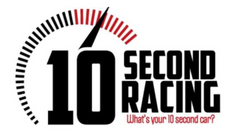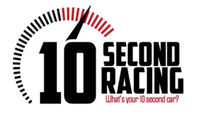Compatible: (3.0L)
2019 - 2023 BMW Z4
2020 - 2023 Toyota GR Supra
Radium Engineering catch cans feature large 10AN ORB ports, a 4AN ORB drain port, 2-step oil separation baffling, and an O-ring sealed dipstick. These kits mount using factory holes and integrate perfectly with the surrounding components. They do NOT vent to atmosphere (VTA), thus are emissions and track legal. Closed loop systems remove the oil and sludge from the PCV gasses before it is routed to the engine to be burned. A closed loop system also promotes negative crankcase pressure for optimal performance. Furthermore, closed systems prevent unwanted oil vapors from entering the cabin. The dipsticks built into the catch cans allow easy inspection of accumulated fluid. No cutting, drilling or permanent modifications are required.
Why do we need catch cans?
Piston rings do not seal 100%. As a result, pressurized gasses from the combustion process leak into the crankcase. This is known as "blow by" and a by-product of the modern internal combustion engine. Pressurizing the crankcase can lead to blown out crank seals, oil leaks, poor engine performance, etc. So these crankcase gasses are vented through the PCV system which recycles the gases back into the intake air stream to be burned. When the recycled PCV air combines with the fuel mixture, the effective octane rating of the combined fuel is lowered. The vented/recycled gasses contain oil vapor, water vapor and unburnt fuel, as shown below.
Over time, this nasty mix can create an oily sludge buildup on the inside of the intake manifold and on the intake valves. This sludge can clog sensors, restrict air flow, cause poor idle and other issues.
This issue is further intensified with forced induction heat exchangers, such as intercoolers, which inherently provide ample surface area for cooling purposes. To prevent the sludge from reaching the intake system, a catch can is used as an in-line filter. When dirty crankcase gasses pass through
the catch can, oil and other condensed material collects in the bottom. This oil would otherwise be digested by the engine's combustion process.
Our friends at Donut Media made a good video explaining PCV function and catch cans:
What makes one catch can better than another?
If PCV gasses are routed to a non-sealed reservoir in the engine bay (like a soda can), an unsightly film of oil will form in the area around the can. There is nothing preventing the back flow of oil, water, sludge, or dirty air back into the engine. Furthermore, an open container of oil in the engine bay is a potential fire hazzard.
A good catch can will be sealed, easily serviceable, and contain a means for promoting the condensation of oil and water vapor. The family of Radium Engineering Catch Cans have a CNC machined aluminum construction that allows for the design of features that are too complex for a welded design. These features include a dipstick, drain port, 2-pc screw together design, O-Ring ports, threaded mounting bosses, etc.

Radium Engineering Catch Cans are CNC machined from solid aluminum bar, then they are anodized, and laser engraved.

Radium offers 3 different catch can sizes. All function in the same manner, but the different volumes accomodate different applications.
Radium recommends using the Standard Catch Can for street cars and the large catch cans for competition vehicles. However, if your street car is expelling a large amount of oil, then the larger competiion catch can may be a better choice.
For competition vehicles, check with your sanctioning body rule book to see what minimum catch tank volume is required. 
As shown in the above photo, all of the Radium catch cans feature washeable stainless steel filtration media to promote oil and water vapor condensation.
The complete catch cans are easily serviced and the filtration material can be cleaned and reused.

The theory is to slow down crankcase flow to promote condensation and air/oil separation. The internal design provides an abundance of surface area for oil and water vapor to cling to as it cools and drops out of suspension.
Radium Engineering Catch Can Features:
-Capacity: 8 fluid ounces
-Accepts 7/8-14 (-10AN ORB) fittings
-Safe to use in pressurized applications
-Stainless steel cleanable and reuseable filter media
-CNC 6061 aluminum body unscrews for easy draining of fluids
-Integrated air/oil separator
-O-ring sealed two-piece design
-Anodized & laser engraved finish
-Powder coated aluminum mounting bracket
-CNC 6061 aluminum O-ring sealed dipstick
Benefits:
-Lowers hydrocarbon emissions
-Excessive oil collection can be an indicator of a damaged engine
-Prevents oil buildup in the intake or intercooler system walls, throttle body, and intake manifold
-Increased engine performance through cleaner inlet air
What about the Radium Air/Oil Separator (AOS)?
An air/oil separator works much like a catch can, the main difference being that the AOS allows the oil to be drained back to the engine. In order to allow the oil to drain back, the bottom port on the AOS must be connected to a compatible port on the crankcase or oil pan, in a way that gravity will allow the oil to flow into the engine.
A key component of the AOS is the heated bottom plate. Engine coolant is plumbed to the AOS bottom plate in order to keep the AOS heated. This is critical in keeping water vapor from collecting in the AOS, as the goal is to only collect and return oil to the crankcase. An AOS system eliminates the PCV valve and associated connection to the intake manifold.
The main benefit of the AOS system is the low maintenance. Because any oil collected is returned to the engine, it does not have to be emptied on a regular basis.
PLUMBING
Shown below is a common crank ventilation system. The vacuum from the intake manifold draws air through the system pulling the crankcase gasses out and burning them in the combustion process. The PCV line is shown in blue and the crank vent line is shown in orange.
A key component of the system shown above is the PCV valve. It opens and closes depending on the amount of vacuum (or pressure, if boosted) from the intake manifold. If the hose going to the PCV valve is not connected to the intake manifold, the PCV will not function properly. The PCV valve allows air to be drawn through the engine's crankcase, using the vacuum of the intake manifold to do so. The air enters through the crankcase vent side and then is sucked into the intake manifold. This helps draw out moisture from the crankcase.

Radium Engineering catch cans can be installed on either the PCV line, the crank vent line, or both.
Shown below are catch cans installed on both the PCV line and crank vent line (dual catch can kit). This is considered a "closed" system because all hoses route as they did in the OEM system (above). Nothing is being vented to atmosphere. This system replicates the function of the OEM system with the added benefit of oil separation accumulation in the catch cans. A closed system is great because no matter the manifold pressure, the PCV system is always promoting negative pressure in the crankcase via vacuum created by the intake manifold or the intake pipe. Furthermore, this setup remains emissions legal.
The Radium catch cans do not have a specific inlet or outlet port. Either the top or side port can be used for the inlet or outlet.

CLICK HERE TO OPEN A HIGH-RESOLUTION VERSION OF THE GRAPHICS ON THIS PAGE
For high performance vehicles that experience excessive blow-by, the primary goal is to let the crankcase "breathe" as much as possible when under high load/RPM. Generally, these applications include loosely built race engiens that spend a lot of time at full throttle/full boost.
Also, emissions compliance is generally not a concern in these types of applications, with the catch cans vent to atmosphere.
Shown below is an open system using a catch can on each line. For this system to work properly, some customization must be done. First, the port on the intake pipe that was connecting to the crankcase vent line must be capped. The same goes for the port on the intake manifold for the PCV line. Furthermore, the PCV valve should be removed and replaced with a large diameter straight-through fitting. This may require some modificaion to the valve cover or creation of a special fitting depending on the vehicle. (NOTE: Eliminating the PCV valve and the corresponding connection to the intake manifold will remove the ability of the PCV system draw out moisture from the crankcase.)
This system essentially creates two large, high-flowing ventilation points through which the crankcase can breathe. Radium Engineering offers optional breather filters that install on the outlet port of the catch can. They can be found HERE. Note: There may be "smells" coming from the catch cans and entering the engine bay. These "smells" can make their way into the fresh air intake of the HVAC system and can be noticeable inside the cabin.

Do I need to install a check valve to keep boost out of the catch can?
No. Radium Engineering catch cans are designed to withstand boost pressure and thus can be plumbed directly to the intake manifold without the need for a check valve.
Should I drain the oil that accumulates in the catch cans back into the engine?
The Radium Engineering catch cans are equipped with a female threaded port on the bottom which could be used to allow draining of contents back into the engine. However, keep in mind, that the catch cans do not ONLY collect oil, they also collect condensed water and unburnt fuel. When these mix together in high temperatures, they form a nasty, foul-smelling "sludge" that you do not want back in the engine. The Radium Engineering catch cans can be easily drained using a few different methods.
Here is a sample of what you can typically expect to find in a catch can:
However, if a proper heated Air Oil Separator is used, the oil can be returned back to the engine.
If I only want to use one catch can, which line (PCV or Crank Vent) should I install it on?
This question is asked quite often and the answer can be different for every application. The best way to solve this is to do a simple inspection of the engine. Look inside the intake pipe in the region of the crank vent line barb and throttle body (region A in the diagram below). If oil accumulation is found, it is most likely coming from the crank vent line and a catch can should be installed on that line.
While slightly more difficult to do, it is worthwhile to inspect the inside walls of the intake manifold (region B) in the area of the PCV inlet port. Once again, if heavy oil coating is present, it could be coming from the PCV line and a catch can should be installed. Note: Since this region is downstream of the crank vent line, oil could also be coming from the crank vent and collecting in the bottom of the manifold. Keep this in mind when inspecting.

Radium always recommends both catch cans are used for maximum effectiveness. You may find one catch can collects at a faster rate than the other and will be emptied more often.

Radium Engineering offers universal catch cans as well as application specific kits for certain vehicles that offer an easy bolt-in installation. Fittings and hoses are also available for custom installations.

All Radium catch cans incorporate a dip stick to allow quick checking of the fluid level inside the can..jpg)
The Radium Engineering Competition Catch Can is a good option for motorsports applications trying to meet minimum capacity requirements.

A Radium Engineering Competition Catch Can shown in Michael Essa's FD championship winning E46 M3.

Warranty:










